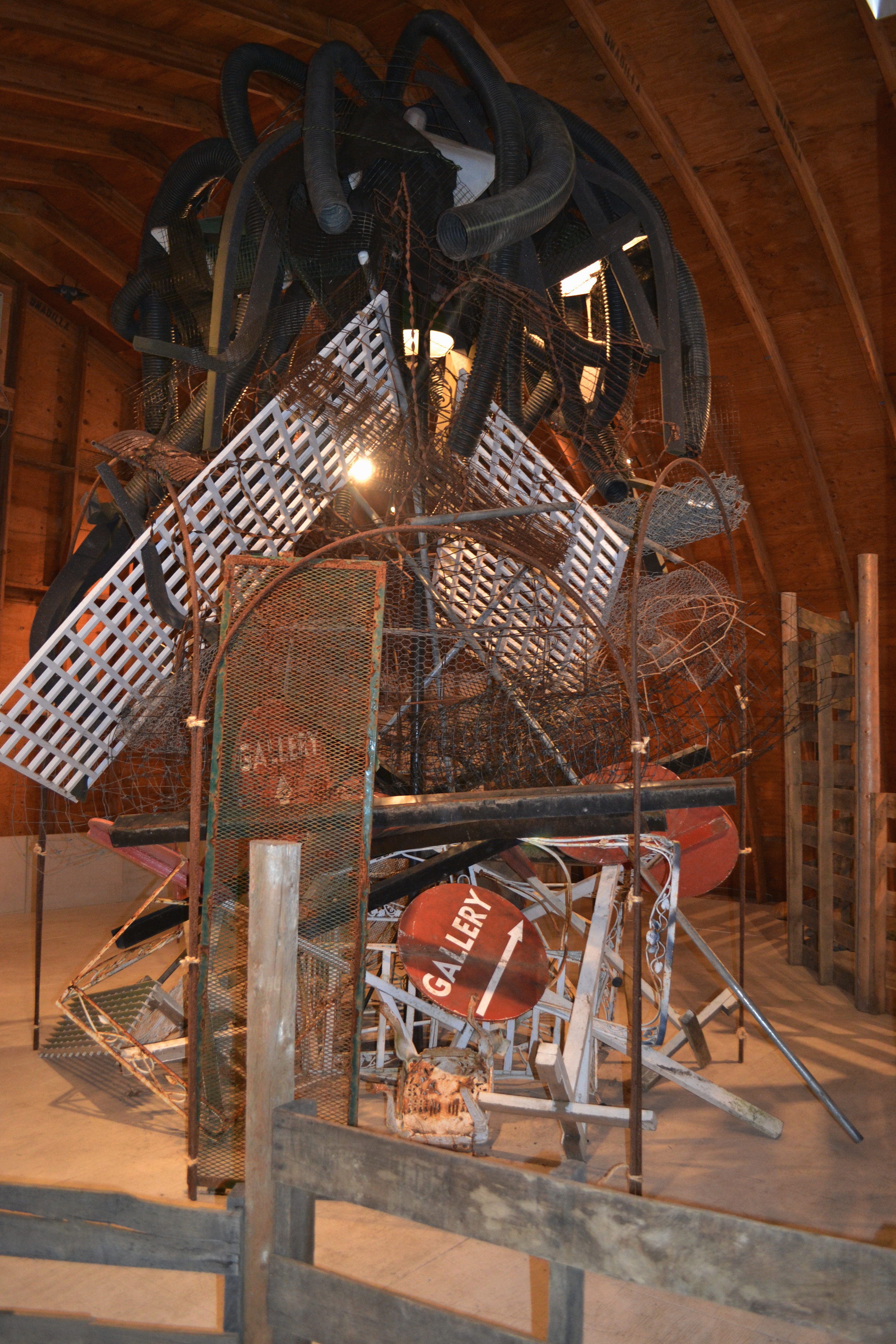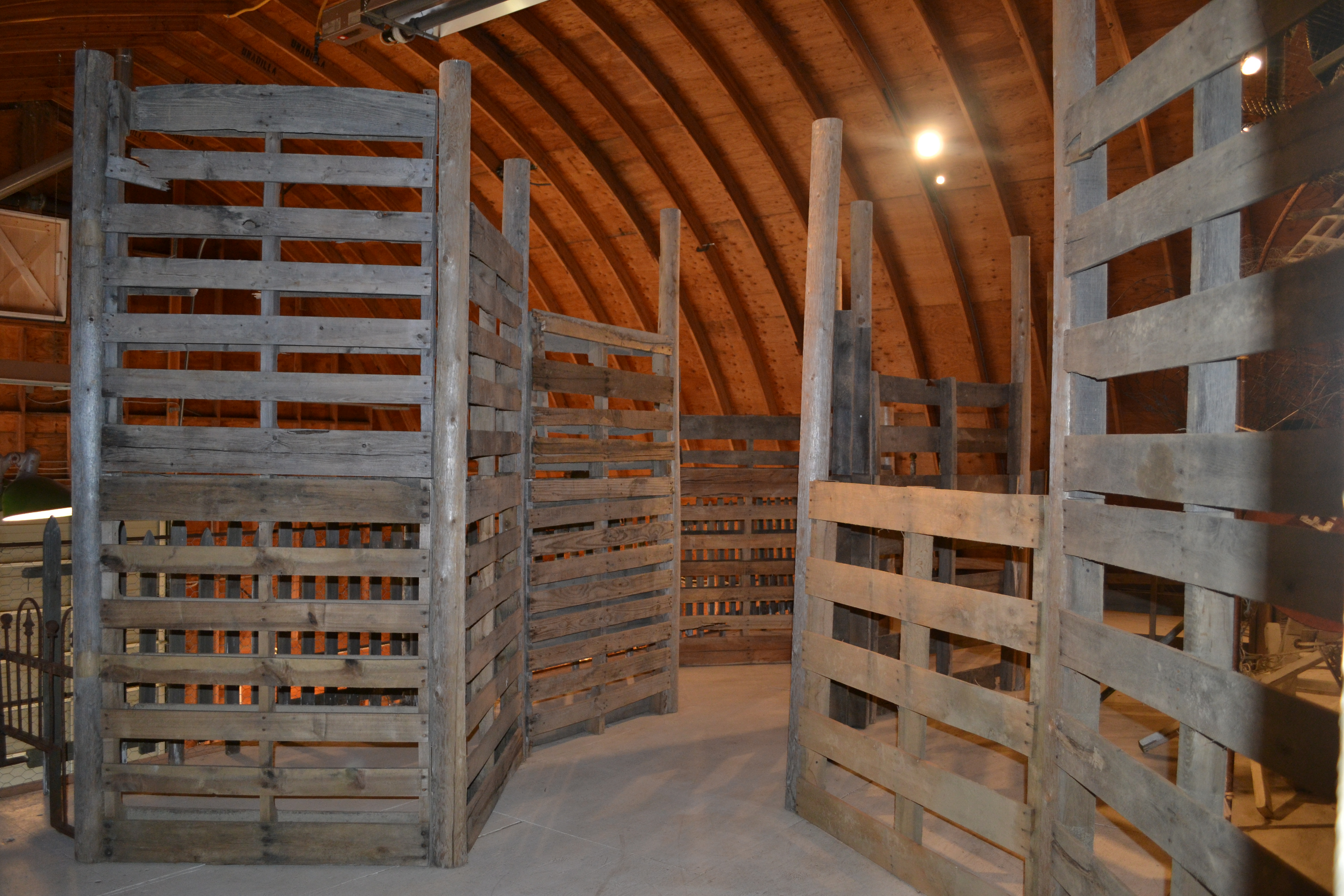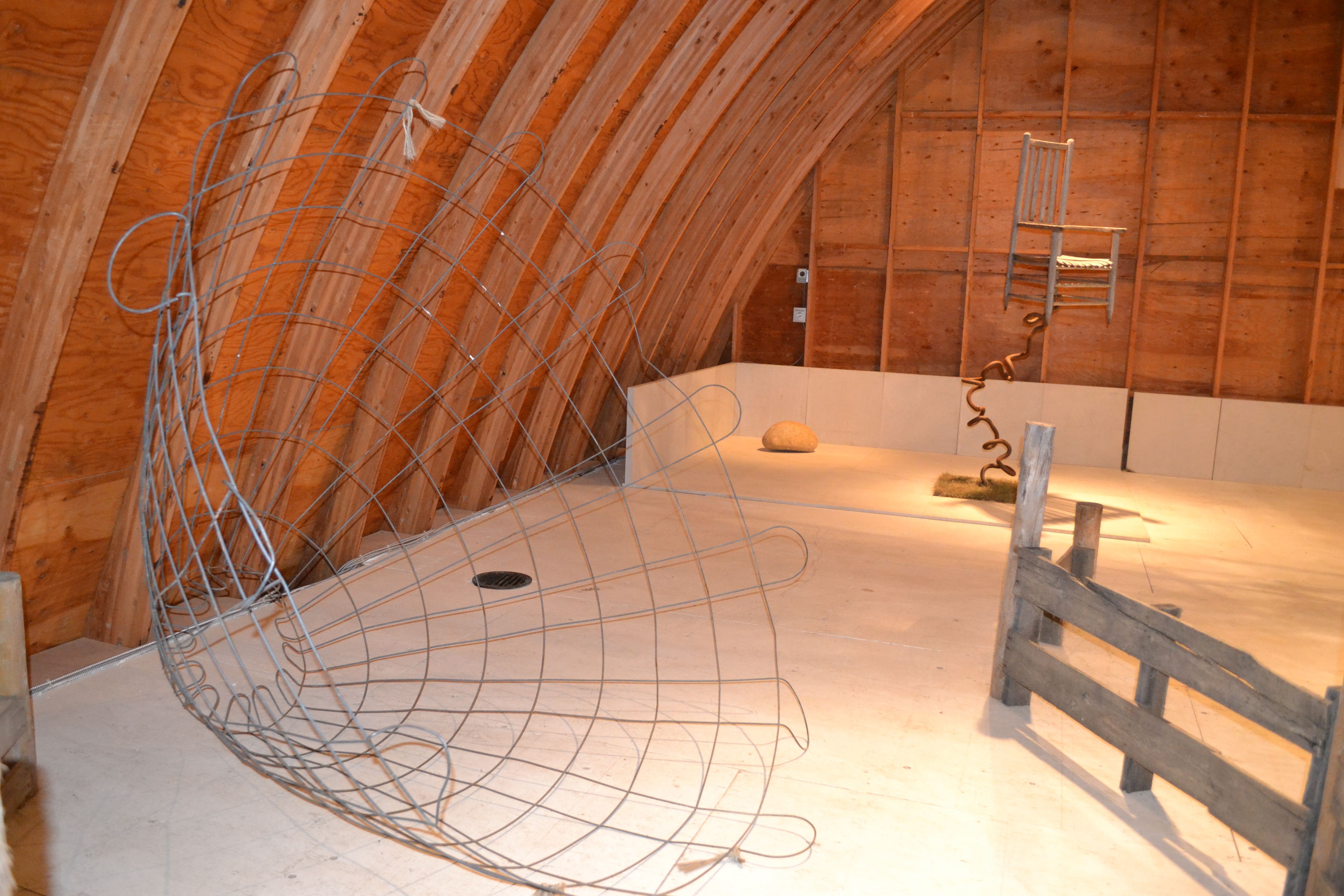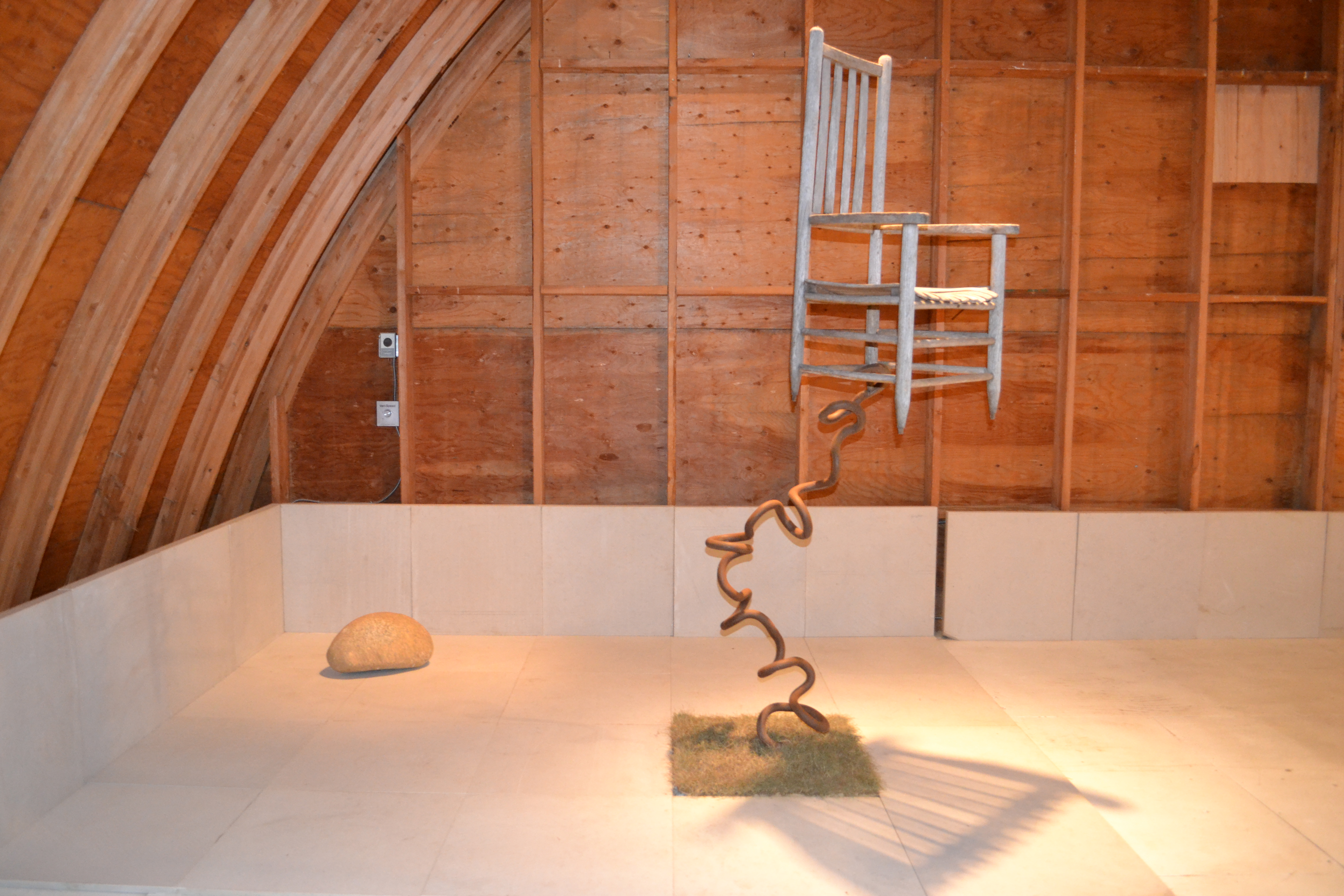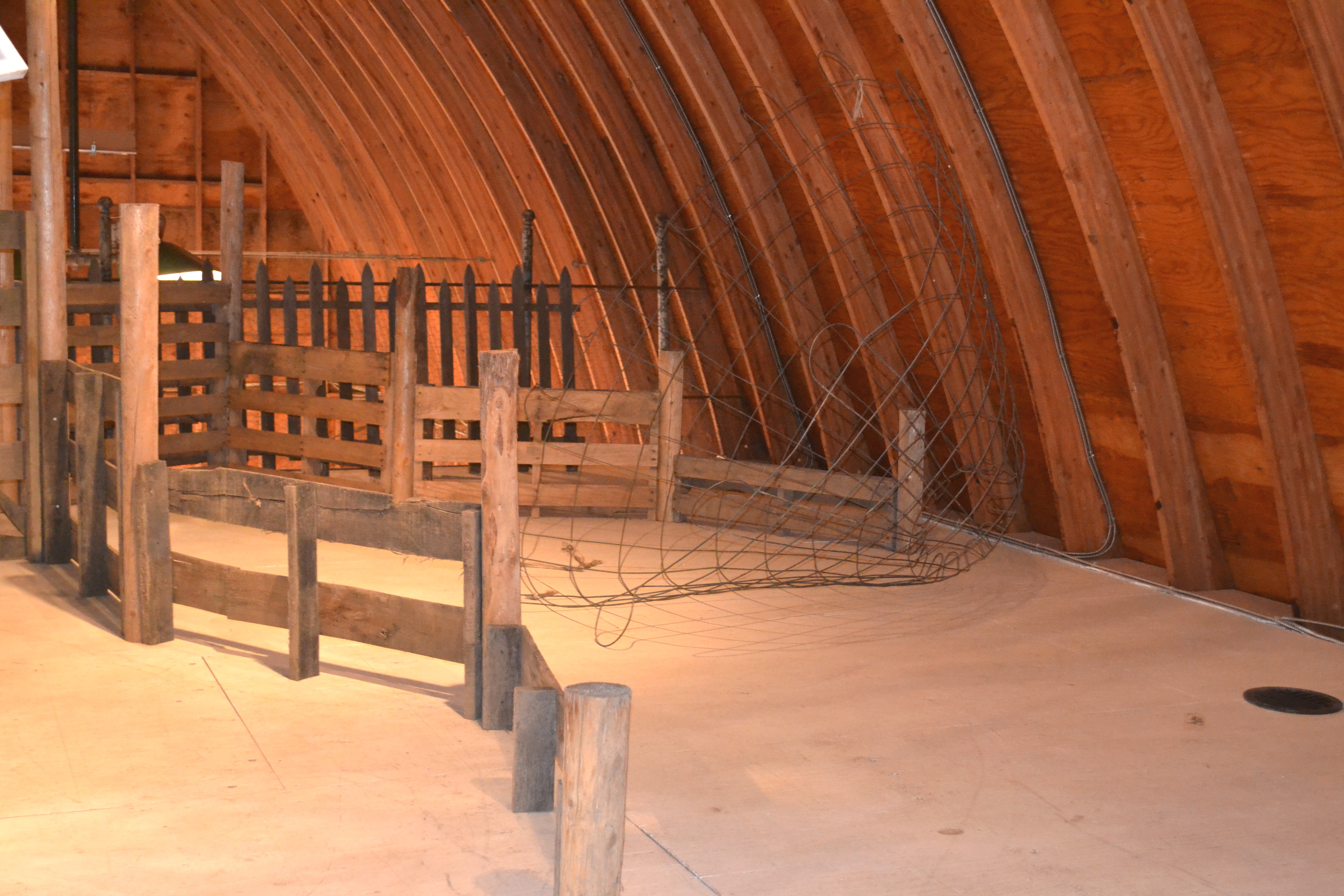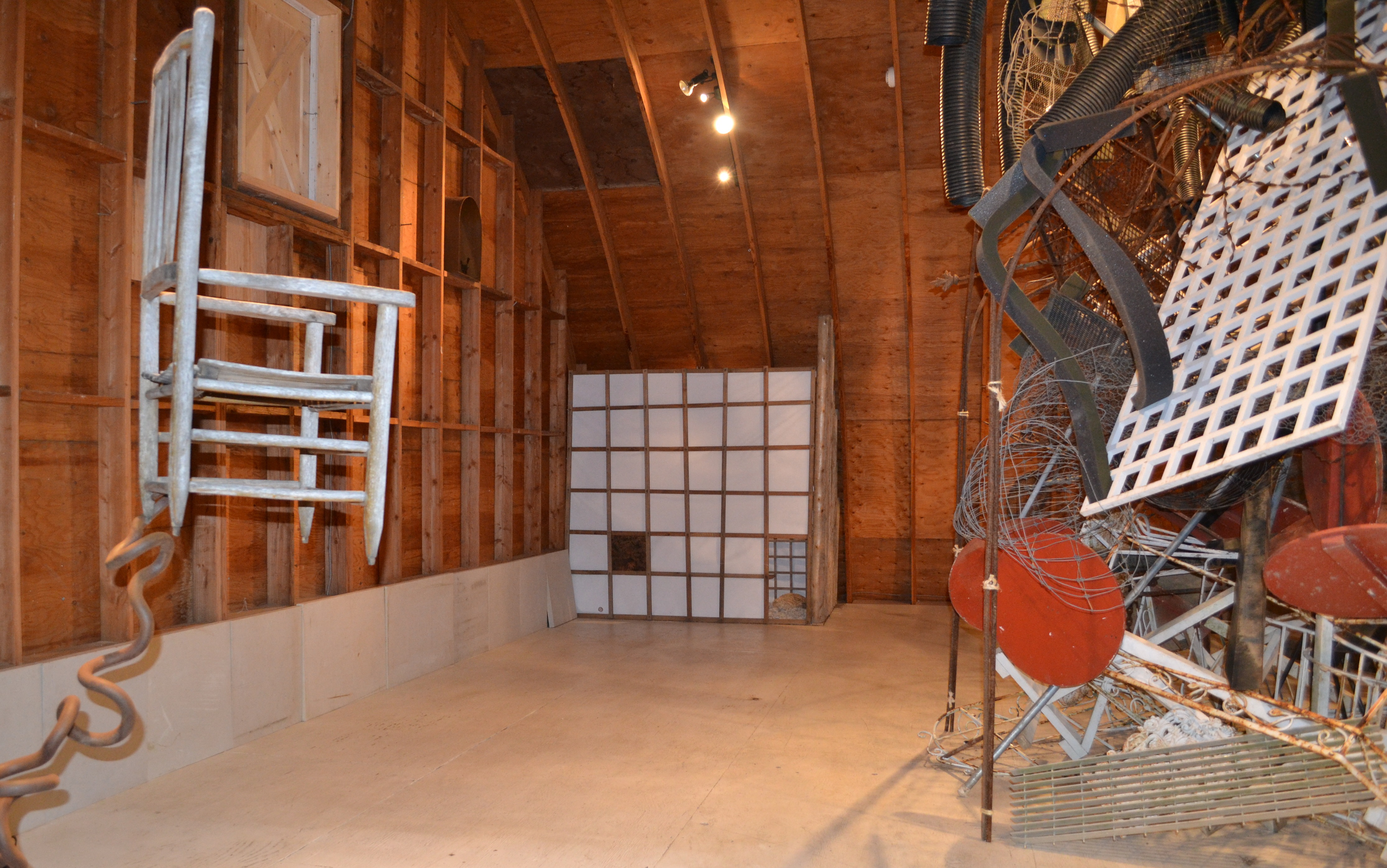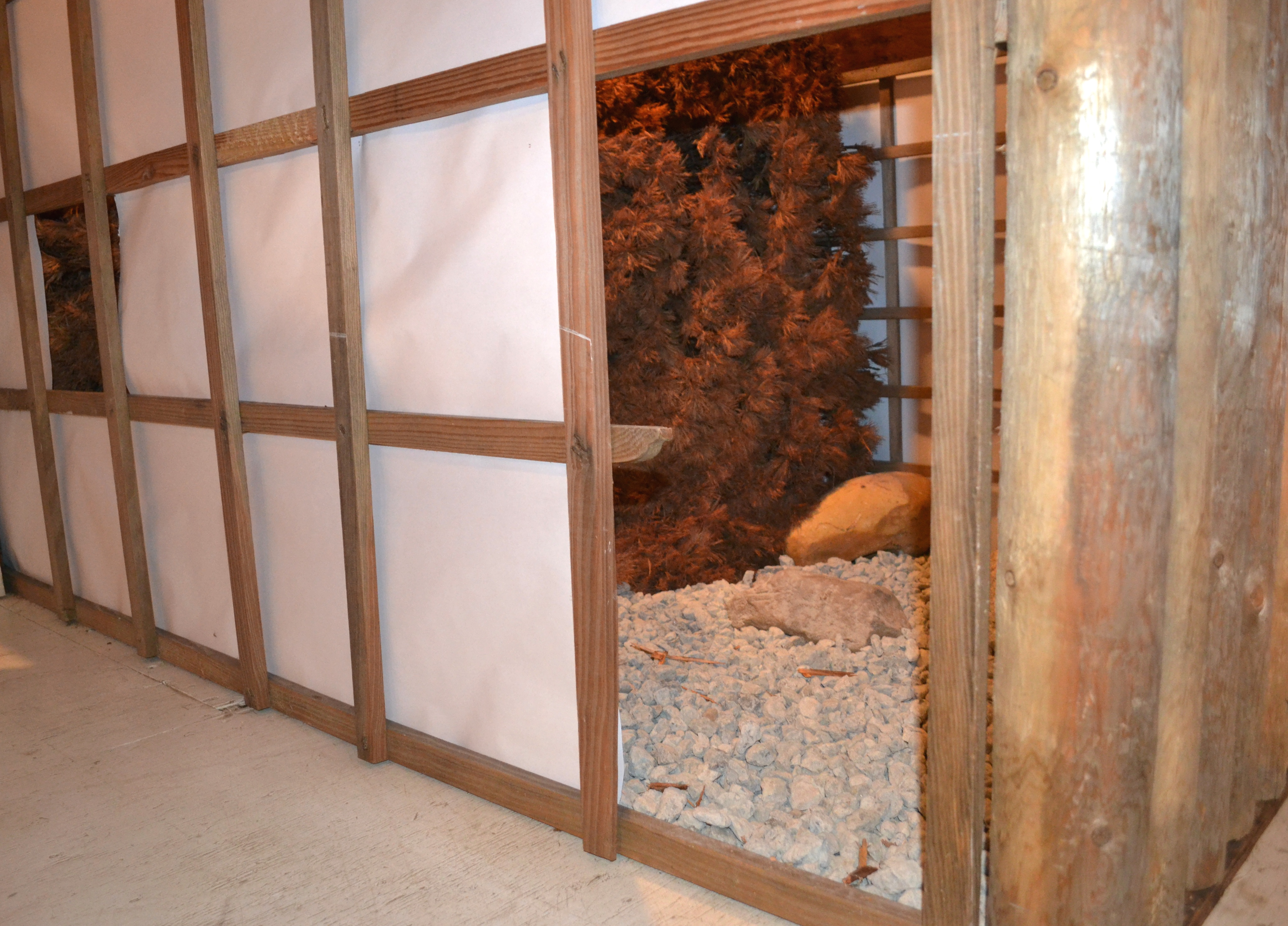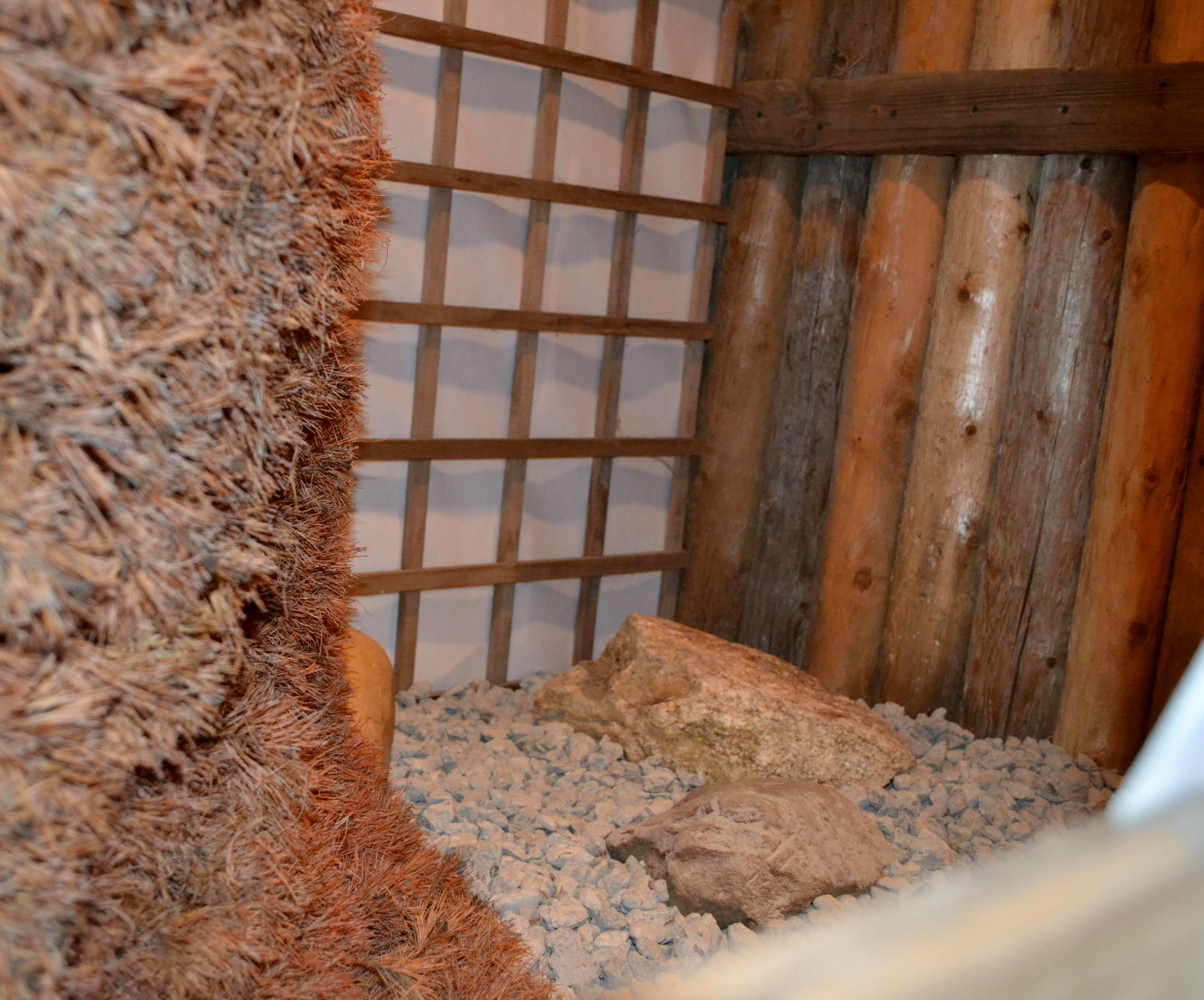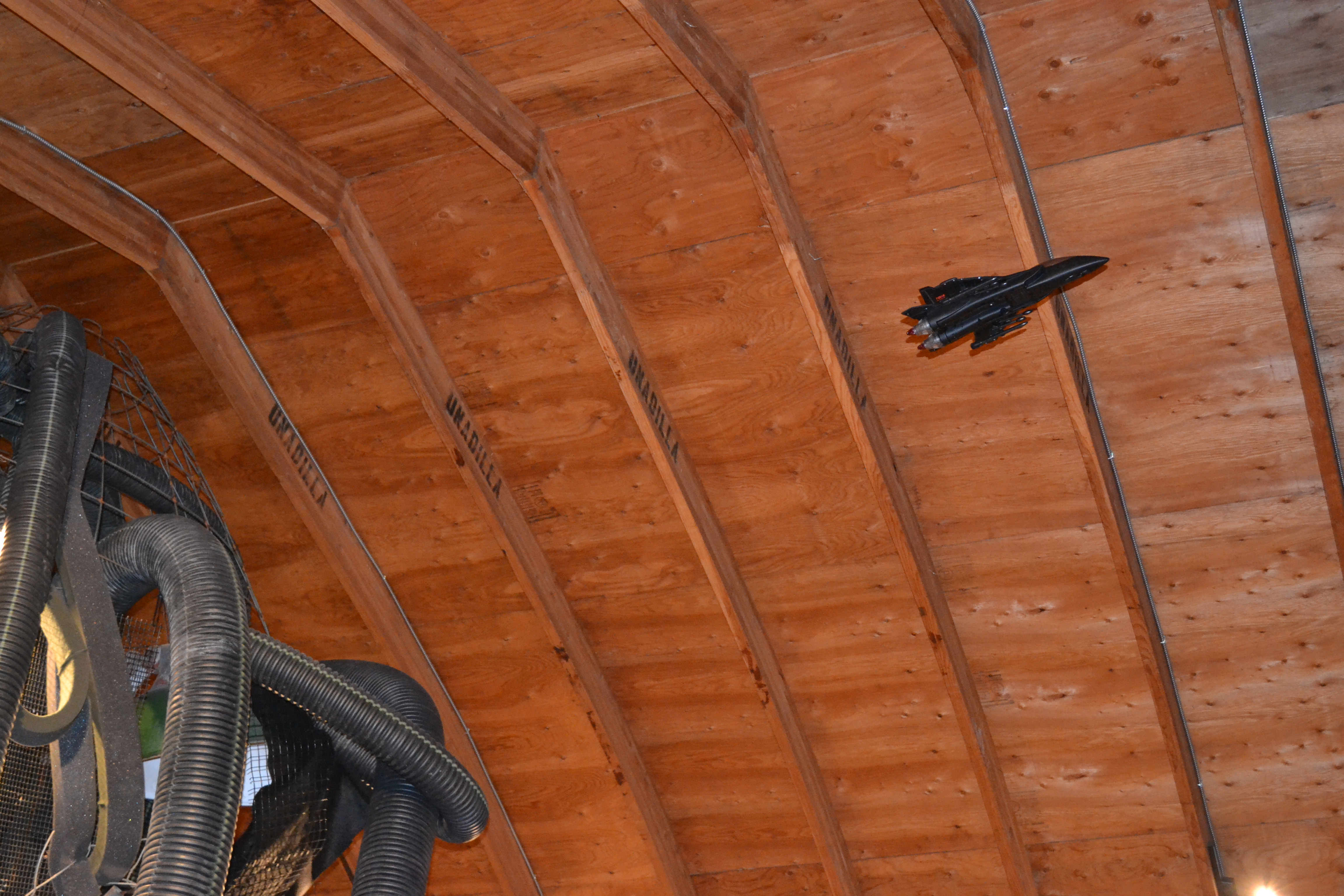The installation on the upper level of the Silas Marder Gallery is like an art wonderland. The trip begins with an announcement, clad in an ornate frame, placed at the foot of a wooden staircase: "Architecture of a Bomb is a collaborative site-specific artwork by Ben Butler and Michael Rosch. The two artists, with very different styles, were given one week to create an interactive space in one of the galleries using what they found on the Marders Landscape property."
The climb upward to the second story gallery slowly reveals sturdy fencing corralling the art. The view of the towering sculpture is a partial one. Peering around the wooden rails, it feels like the Silas Marder Gallery has tucked a historic museum into its cavernous space so they could display artifacts needing protection from curious hands fondling precious treasures.
Since the "artifacts" are the art installation, the question becomes: What is being protected--the art or the public from possible sudden combustion?
Peering closer, details of the tower become clear. The pile of unrelated objects has a Jenga-like structure with the relationship between stacked items creating the structure and holds the parts in place. Despite its tenuous arrangement, a collapse doesn't seem likely.
Through a frame of fencing, a passageway is created and provides direction into the art. Part of the joy of experiencing Architecture of a Bomb is remaining curious and walking through the alleyway into a full-room installation of surprising art with dollops of whimsy, wonderment and serious musing. Draped over the top are black hoses that direct the eye downward to continue exploring the art.
One of the most prominent objects in the busy core are red signs with white lettering pronouncing "GALLERY." The familiar announcement seems to provide assurance the sculpture will not explode and is worthy of its exalted place behind the fencing.
When exiting the pathway, there's an unexpected wire object without explanation or excuse. Nearby, a chair sits midair atop a thick coil. It springs from a square of sod inset into a makeshift floor of marble squares. A single rock is there too, engaging in an uneasy conversation with the sculpture.
The room opens and access to the tower is unfettered. This allows for a closer examination of the visual riot of rusted and weather worn objects and time to ponder its meaning.
.
.
Tucked in another corner is a structure of paper screens and wooden posts. Two lighted openings beckon near the bottom of the installation. Crouching or sitting on the floor is necessary to see inside the hidden room.
.
.
Hovering silently above is the key unlocking the mystery of the installation's title. Suspended from the gallery's ceiling is a black toy jet. The artists discovered a parallel between the installation's completion and unveiling with the first wartime uses of the atomic bomb, said gallery manager Alana Leland. The realization led to the naming of the artwork.
The first atomic bomb to be used in war was dropped on Hiroshima, Japan, by the United States on August 6, 1945. An art opening for Architecture of a Bomb was held on Aug 6, 2011, coincidentally coinciding with the anniversary of Hiroshima's bombing, said Leland. A second atomic bomb used in war was dropped on Nagasaki, Japan on Aug 9, 1945. The three-day period between bombings is the same amount of time the artists took to decide their artwork was completed, said Leland.
.
.
Architecture of a Bomb rose into creation after Butler and Rosch were invited by Silas Marder to make a site-specific artwork. The artists were given five days and $40 to create an installation using whatever items they could find and carry on the grounds of Marder's Garden Center and Nursery. (The gallery is also located on the property).
Silas Marder selected the pair of artists--who had never met before--to see what would happen when artists with radically-different working styles created a single installation. Both artists live in the Hamptons (at least part time) and have exhibited with the Silas Marder Gallery. Marder had faith the artists would make something interesting that was worth exhibiting in a gallery, said Leland.
Butler's work is precise with a strong architectural feel. Wood components are calculated to form lines or defined shapes in sculptures where the overall form is an important part of the art. The fencing in Architecture of a Bomb was created by Butler. It was made from pallets and posts.
Rosch's art is intuitive, lyrical and infused with a sense of humor (or irony). Metal is often curly-cued into a twisting spring, which is a familiar form for Rosch. Stacking objects on a skyward path to nowhere is another signature of Rosch's work. The installation featuring the chair on curved metal was made by Rosch.
Architecture of a Bomb includes chicken wire, trellis frames, plastic tubes, foam strips, metal chair parts, outdoor table tops, metal posts, decorative details and more to create the site-specific found object installation.
_________________________
BASIC FACTS: Architecture of a Bomb by Ben Butler and Michael Rosch remains on view through Dec 18 at Silas Marder Gallery, 120 Snake Hollow Road, Bridgehampton, NY. www.silasmarder.com. For information on the artists, visit www.benbutlerart.com or www.juliekeyesart.com.
Architecture of a Bomb was commissioned for the group exhibition, "Architecture," held at the Silas Marder Gallery from Aug 6 to Sept 18, 2011. The site-specific installation was extended to remain on view through December by popular demand. The current group exhibition, "America," remains on view through Dec 18, 2011. It includes art by Dennis Lawrence, John Morse, Robert Olsen, Corinne von Lebusa and others.
________________________________________
© 2011 Pat Rogers and Hamptons Art Hub.

